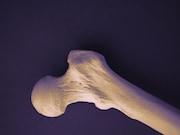Lumbar spine, femoral neck BMD higher in postmenopausal women with first-degree family history
WEDNESDAY, Aug. 21, 2019 (HealthDay News) — Postmenopausal women with normoglycemia with a first-degree family history of diabetes (FHD) have elevated bone mineral density (BMD), according to a study published online Aug. 19 in Menopause.
Lijuan Yang, M.D., from the First Affiliated Hospital of Wenzhou Medical University in China, and colleagues divided 892 postmenopausal women with normoglycemia into subgroups with or without an FHD to examine the correlation with BMD.
The researchers found that participants with a first-degree FHD had significantly higher BMD of the lumbar spine and femoral neck than those without an FHD. Positive associations were seen for lumbar spine BMD and femoral neck BMD with the Homeostasis Model Assessment – Insulin Resistance index. A first-degree FHD was an independent factor positively associated with lumbar spine BMD and femoral neck BMD (standardized β = 0.111 and 0.078, respectively). Associations were seen for first-degree FHD with increased BMD, insulin resistance, and hyperinsulinemia.
“The present study revealed for the first time a significant increase in BMD in normoglycemic individuals with a first-degree FHD, supporting the concept that the protective effects on the skeleton occur before the onset of glucose metabolism abnormalities,” the authors write. “Based on these clinical associations, we suggest that the elevated BMD in individuals with a first-degree FHD could be attributed to insulin resistance.”
Copyright © 2019 HealthDay. All rights reserved.








